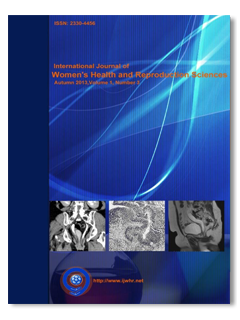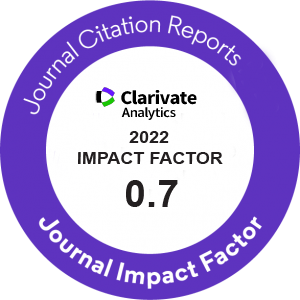
| Original Article | |
| Can activators enhance potentially developmental capacity of 2-cell blocked mouse embryos? | |
| Mohammad Reza Darabi1, Parvindokht Bayat1, Ali Reza Shams2, Azindokht Nezhadi3, Ali Faraji4 | |
| 1Department of Anatomy, Arak University of Medical Sciences, Arak, Iran 2Department of Anatomy, Alborz University of Medical Sciences, Karaj, Iran 3Young Researchers and Elite Club, Arak Branch, Islamic Azad University, Arak, Iran 4Medicine Student, International Branch of Shahid Beheshti University of Medical Sciences & Health, Tehran, Iran |
|
|
IJWHR 2013; 1: 088-098 DOI: 10.15296/ijwhr.2013.15 Viewed : 3515 times Downloaded : 3156 times. Keywords : Activation, Arrest, Mouse, Two-Cell Embryo |
|
| Full Text(PDF) | Related Articles | |
| Abstract | |
Objective: Two-cell block as a problem occurs in some couples
referring to infertility center. This study was designed to
compare the effect of different kinds of chemical activators on
arrested mouse two-cell stage embryos in order to enhance
cleavage and developmental formation rate. Material and Methods: Following superovulation, the female mice were mated with males and positive vaginal plaque mice were euthanized 48 hours after hCG injection. Subsequently, 2- cell embryos were collected and randomly cultured (in M16 medium) in six groups. Some embryos were washed and cultured as 1st group without any exposure. The remaining 2-cell stage embryos were exposed to 4°C for 24 hours in order to arrest in 2-cell stage for 2nd to 6th groups. The 2nd group was incubated immediately, while the 3rd group was exposed to 10 μM Ionomycine for 3 minutes and the 4th group was exposed to 10 mM strontium for 5 minutes. The 5th group was exposed to %0.1 Ethanol for 5 minutes and the 6th group to %0.1 Methanol for 3 minutes. Subsequently, all groups were incubated up to blastocyst stage. Results: Data were analysed employing a one-way Anova test the results show that the rate of degenerated embryos is significantly different (P<0.05) between groups by low temperature (4°C) exposure. The mean percentages of cleavage, blastocyst and hatched blastocyst formation rate in the 4th group were 80.9%, 69.2%, and 46% respectively, showing a significant difference between groups. Conclusion: This study shows that among different chemical activators used in this study, Strontium is the most powerful chemical activator to enhance cleavage and development of arrested two-cell embryos in the 4th group. |
Cite By, Google Scholar
Google Scholar
PubMed
Online Submission System
 IJWHR ENDNOTE ® Style
IJWHR ENDNOTE ® Style
 Tutorials
Tutorials
 Publication Charge
Women's Reproductive Health Research Center
About Journal
Publication Charge
Women's Reproductive Health Research Center
About Journal
Aras Part Medical International Press Editor-in-Chief
Arash Khaki
Mertihan Kurdoglu Deputy Editor
Zafer Akan





















